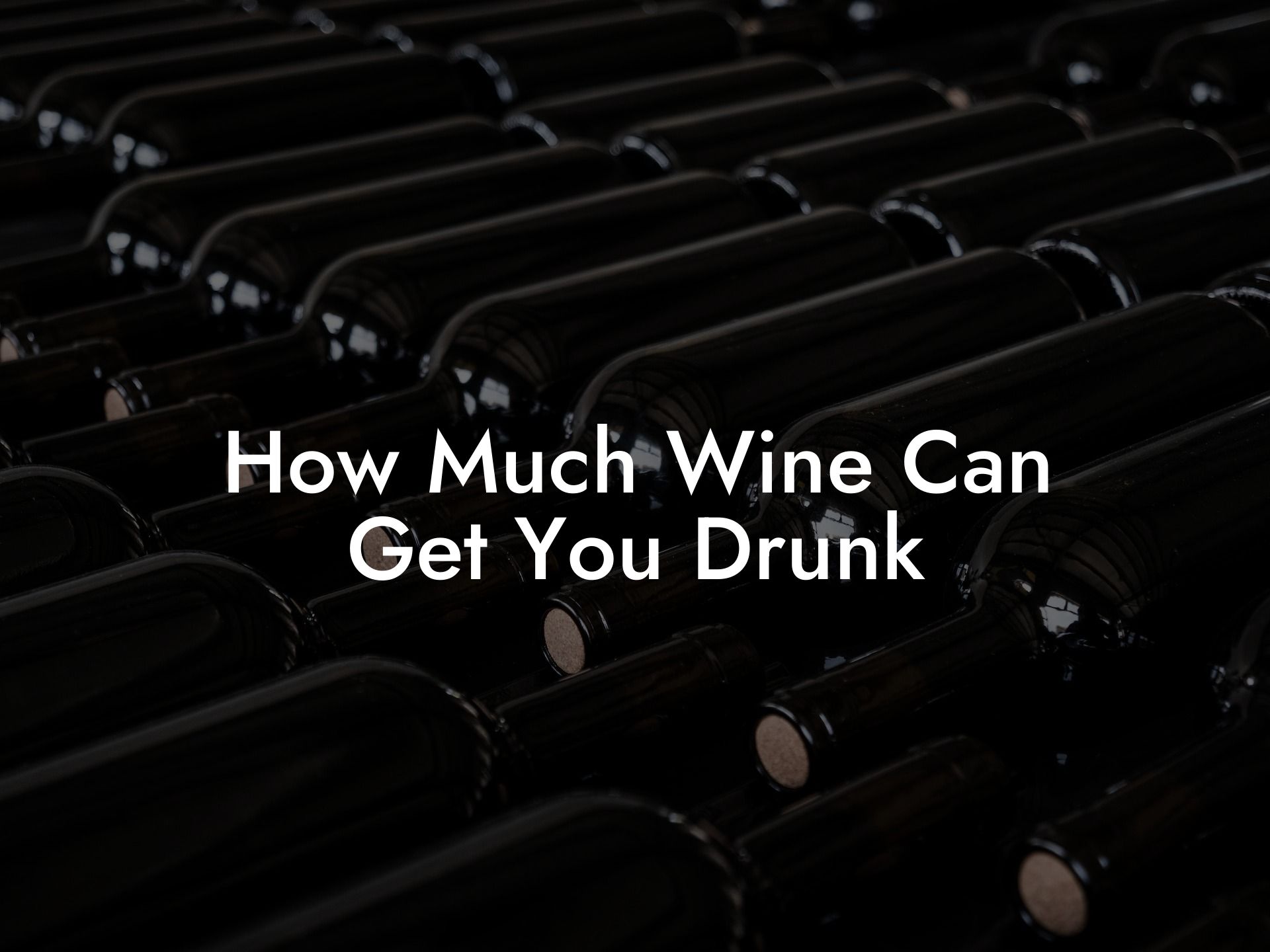Picture this: you're at an event hosted by the Black Wine Club, sipping some fine wine, chatting with fellow artsy creatives, and grooving to the beat of live electronic music. As the evening progresses, you start wondering - how much wine does it take to get you drunk? Well, buckle up for an exciting ride as we dive deep into the world of wine and the tipsy territory it can lead you into.
How Much Wine Can Get You Drunk Table of Contents
Understanding Alcohol Content in Wine
First things first, it's essential to understand alcohol content in wine. Alcohol content is usually expressed as a percentage known as alcohol by volume (ABV), which indicates the amount of pure alcohol present in a beverage.
Wine typically has an alcohol content ranging from 5.5% to 20% ABV, with most types falling between 12% and 15%. Factors influencing the alcohol content include grape variety, fermentation process, sugar levels, and winemaking techniques.
Do You Want to Win a Free Bottle of Wine?
Don't miss out on the opportunity to win a free bottle of wine every week.
Enter our weekly prize draw today!
Low Alcohol Wines
- Moscato - 5.5-12% ABV
- Riesling - 7.5-11% ABV
- Prosecco - 11-12.5% ABV
Medium Alcohol Wines
- Pinot Grigio - 12-13% ABV
- Chardonnay - 13-14% ABV
- Merlot - 12.5-14.5% ABV
High Alcohol Wines
- Shiraz - 14-15% ABV
- Cabernet Sauvignon - 13.5-15% ABV
- Port - 19-20% ABV
Factors Affecting Intoxication Level
It's important to note that getting intoxicated by alcohol depends on several factors, including gender, weight, metabolism, tolerance, and food consumption. Here's how these factors come into play:
Gender
Biological differences cause women to feel the effects of alcohol more quickly than men.
Weight
Heavier individuals generally have a higher tolerance for alcohol and may not feel its effects as quickly as lighter individuals.
Metabolism
Individuals with high metabolisms burn through alcohol faster, while those with a slow metabolism take longer to process alcohol.
Tolerance
Regular drinkers or those with high tolerance levels may require larger amounts of alcohol to feel its effects.
Food Consumption
Drinking on an empty stomach tends to result in faster intoxication, while consuming food slows down alcohol absorption.
How Much Wine Can Get You Drunk Example:
Let's say Jane and John are attending a Black Wine Club event. Jane weighs 130 pounds, and John weighs 180 pounds. They both enjoy three 5-ounce glasses of Chardonnay with 13% ABV.
Using the Widmark Formula, we can estimate their Blood Alcohol Concentration (BAC) after drinking three glasses:
Jane's BAC: 0.089 (estimated)
John's BAC: 0.064 (estimated)
Considering that Jane has a higher BAC level than John, she is more likely to feel intoxicated after consuming the same amount of wine.
Now that you know the factors influencing alcohol intoxication and an estimate of how much wine it takes to feel tipsy, you can confidently enjoy your next wine event with Black Wine Club – just remember to drink responsibly and know your limits. If you found this article helpful, be sure to share it with fellow wine enthusiasts, and don't forget to explore other insightful guides and content right here on Black Wine Club. Cheers!
Do You Want to Win a Free Bottle of Wine?
Don't miss out on the opportunity to win a free bottle of wine every week.
Enter our weekly prize draw today!












